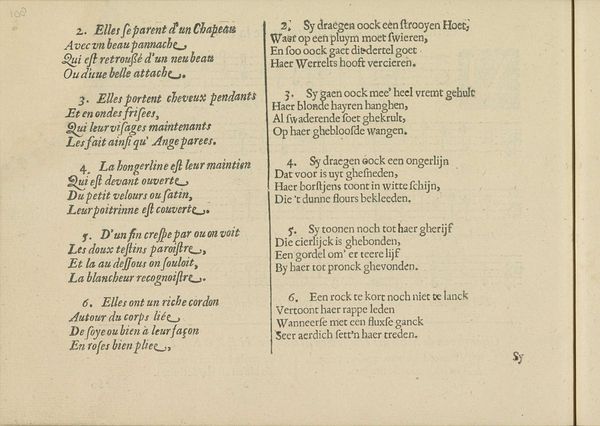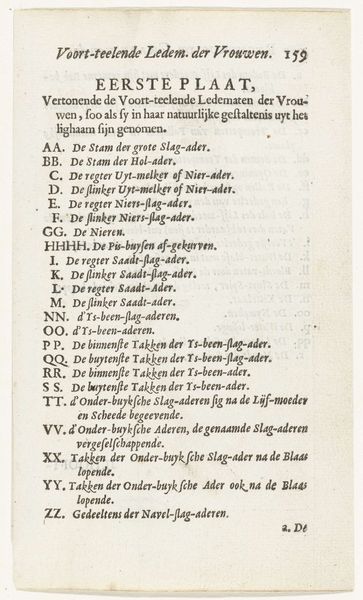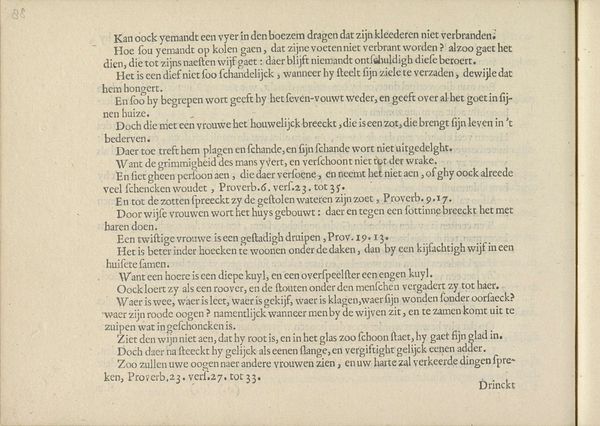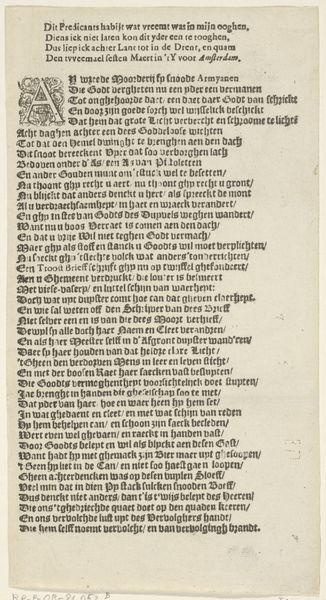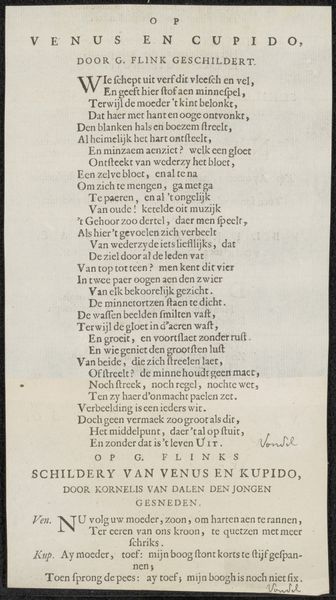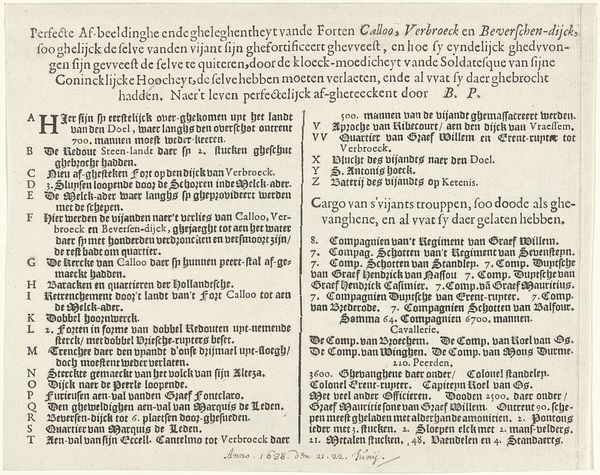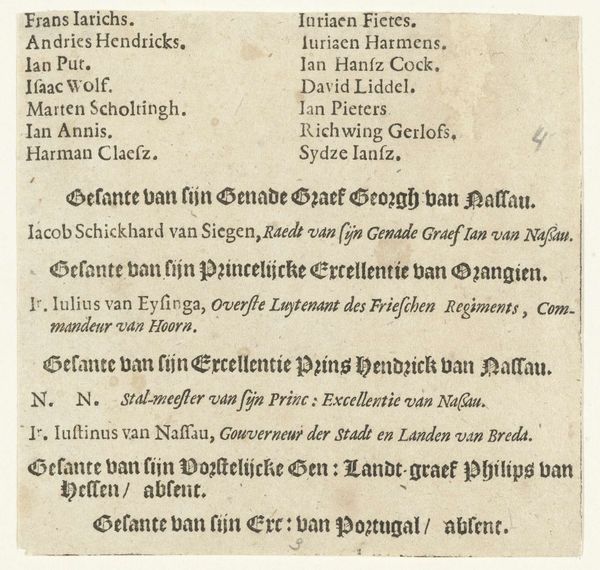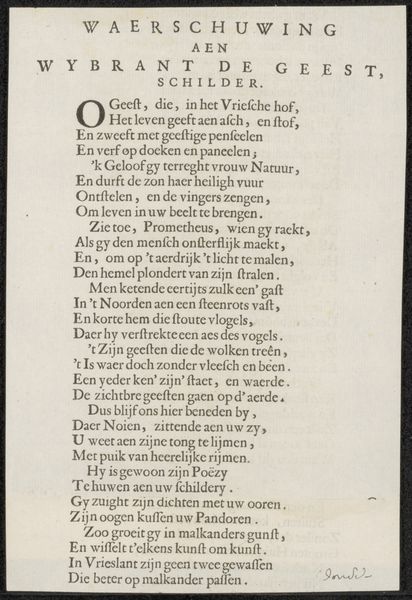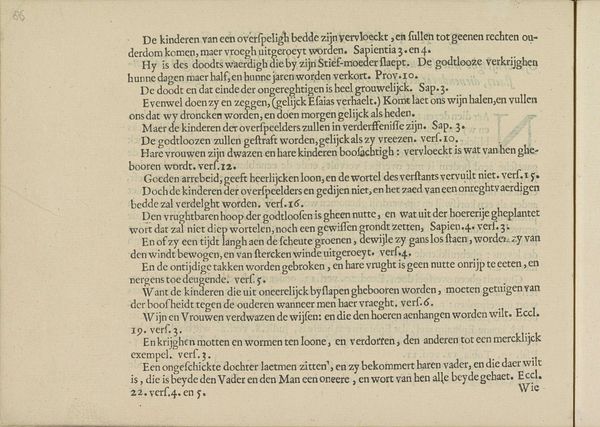
Tekstblad met een lijst van de slachtoffers gevallen bij de inname van het fort Nassau, 1640 (?) 1640 - 1645
0:00
0:00
print, paper, typography
#
dutch-golden-age
# print
#
paper
#
text
#
typography
Dimensions: height 267 mm, width 135 mm
Copyright: Rijks Museum: Open Domain
Editor: This is a sobering piece from the Dutch Golden Age, circa 1640-1645. It’s a printed text titled, “Tekstblad met een lijst van de slachtoffers gevallen bij de inname van het fort Nassau, 1640 (?)”. It lists casualties from the siege of Fort Nassau. Looking at this stark record, I feel a deep sense of the human cost of conflict. What strikes you most when you look at it? Curator: The immediacy, I think. It's a raw, unfiltered glimpse into the chaos of war. Jan van Hilten, the publisher, wasn’t crafting a grand narrative; he was disseminating information, however incomplete or biased. It's typography as trauma, almost. Do you see how the simple listing of names—"dood" (dead), "gequetst" (injured)—cuts through any potential glorification of battle? Editor: Yes, it’s incredibly direct. There's no flowery language, just a blunt accounting. And Fort Nassau—that name probably meant something very specific to people then, evoking a whole story that we only get glimpses of now. I suppose it personalizes this piece. Curator: Exactly! Consider the context. This isn’t just data; it’s news, filtered through the lens of Dutch colonial ambition. The Dutch West India Company was heavily invested in Brazil at the time, which explains why the event warranted being recorded and published. But tell me, how do you think seeing it as "art" changes how we view this document? Editor: That's a great question. Viewing it as art allows us to focus on the deliberate choices behind its creation—the font, layout, and language – and interpret its meaning beyond the immediate function. Maybe the unadorned style, the sheer accumulation of loss, *is* the message. It's moving. Curator: Precisely! It makes you think about how information, even the most factual seeming, carries an emotional weight. Even now. Editor: Absolutely. I came expecting history, but I’m leaving with a deeper reflection on loss, conflict and the human story. Curator: As am I! Thanks to you, I am reflecting on art as a historical and immediate record of people, just as much today as back then.
Comments
No comments
Be the first to comment and join the conversation on the ultimate creative platform.
